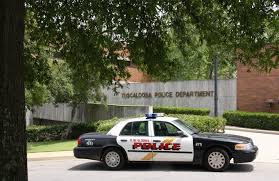By Renuka Srivastava
Shortly after the COVID-19 pandemic’s lockdown was enforced, more rent strikes occurred in this country than ever before. Families are forced to choose between food on their tables or a roof over their heads. This difficult decision is mainly due to reduced hours or unemployment.
I first noticed the direct impact of the housing crisis was when I saw three little kids playing on the sidewalk of a 15-room motel. Combined with the mishandling of this healthcare crisis, I realized that this might be bigger than one family in one motel. That is when the reality of the pandemic became evident – the rent with the pandemic prolonging.
I took it upon myself to better understand the housing crisis by studying customer trends at motels from the beginning of this year to mid-June. Thanks to the support from Alabama Appleseed, I was able to tap into my Desi community to gain rare, critical insight on the realities of the impact from COVID-19 on housing.
An overwhelming majority of the Desi community in Meridian, Mississippi are small motel owners. The relationship that they build with their customers is truly unique; without being academically taught, they understand the problems of over-policing and, therefore, have taken it upon themselves to patrol their properties and be invested in the lives of their customers. In fact, as first-generation immigrants, the motel owners understand the importance of all work without judgment or discrimination and being fairly compensated regardless of the legal status of the work occupants are pursuing in the State. However, this untapped market of personal stories is something that these motel owners carry with them without finding an outlet to share first-hand experiences of seeing local individuals facing job insecurity, food insecurity, and in many instances, homelessness daily.
After speaking to over a dozen motel owners, each owner associated the impact of this pandemic to a natural disaster. “The last time we saw local people impacted in this way was during Katrina or the BP oil spill,” they would share. Usually, these motel owners would see a mix of tourists stopping by for a night and locals spending just a week or two while getting back on their feet. However, immediately after the lockdown, every owner reported a trend of empty rooms and limited business. The increase in activity occurred as soon as the stimulus checks began going out. Although these individuals were finally able to afford a form of housing, they were still, overwhelmingly, paying for their rooms in increments of five to ten dollars as the occupants were able to attain cash. If occupants found themselves unable to pay for a room for a few days, they would sleep in their car or public spaces until they gathered enough funds to come back for another night. Dozens of occupants across the motels would even ask the owners for employment opportunities. However, each motel significantly differed in the types of customers they were seeing based on several variables.
Each motel’s location served a prominent role as the stimulus checks were distributed. Motels near low-income housing saw an increase in individuals engaging in what is considered non-legalized income opportunities by the government. In contrast, motels near malls and fast-food restaurants saw an increase in customers facing homelessness and families with children. Another key indicator of customer trend was whether or not the motel was franchised. Franchised motels had a steady rate of almost no customers staying nights at the motel while privately owned motels were fully occupied every night.
However, the primary concern of each occupant was attaining a form of housing with the stimulus check. Those facing homelessness were found to be splitting a motel room amongst at least seven to eight other individuals. Many motels faced multiple break-ins in motel rooms per night primarily by those seeking a form of housing for the night. In two motels, these rooms had to be completely remodeled due to the extensive damage.
Families staying at motels had their children very rarely leave the motel room. And if children did leave the motel room, they were most likely unsupervised. Because the families occupied these rooms for over two weeks and in many cases for many months, many motel owners reported their children becoming friends with the occupant’s children. There were instances of negligence reported by motel owners ranging from children consistently nearly drowning in the motel’s pool to children interacting with strangers who were providing access to drugs. Motel owners were stepping in to protect these children while simultaneously understanding the dangers of involving the police. It was as if police were called for assistance as an absolute last resort.
The harsh reality of a broken housing system is not independent in itself. It intersects with race, socioeconomic status, redlining, environmental racism, unfair and discriminatory employment practices, and gender identity, to name a few. The harsh reality that countless locals used their stimulus checks to fund a motel room as their primary housing comes to light when one studies the customer trends at motels. As a fundamental human right, a fellow civilian should not have to make the difficult decision to pay an average of $35 per night for using a motel room as housing with a one-time $1,200 check.
Renuka Srivastava, a 2020 graduate of the University of Alabama at Birmingham, spent the summer of 2020 as an intern at Alabama Appleseed.







